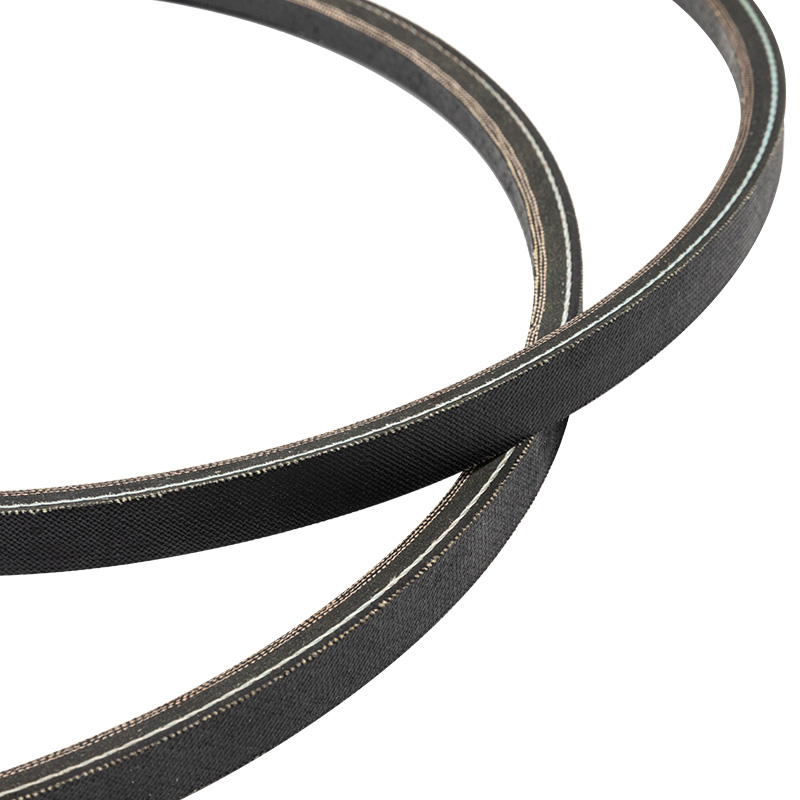Material Expansion and Contraction: The phenomenon of material expansion and contraction due to temperature fluctuations is governed by thermal expansion coefficients inherent in the materials used in Automotive Raw Edge V-Belts. This cyclic thermal stress induces microstructural changes within the belt material, such as dislocation movement and grain boundary migration. Over time, these microstructural alterations accumulate, leading to macroscopic effects such as surface cracking, delamination, and reduced fatigue resistance. The repetitive thermal cycling exacerbates these effects, ultimately compromising the structural integrity of the belt and increasing the likelihood of premature failure. Localized variations in temperature along the length of the belt can introduce differential expansion, creating internal stresses that further contribute to material degradation and failure initiation.
Rubber Degradation: The degradation of rubber compounds in Automotive Raw Edge V-Belts under high-temperature conditions involves complex chemical and physical processes. Elevated temperatures accelerate the rates of chemical reactions within the rubber matrix, including polymer chain scission, oxidation, and cross-linking. These reactions result in the formation of chemical byproducts such as free radicals, carbonyl groups, and peroxide species, which disrupt the polymer network and degrade the material's mechanical properties. Concurrently, thermal energy facilitates molecular mobility within the rubber matrix, leading to increased diffusion rates of volatile compounds and degradation products. This accelerated degradation manifests as a decline in the rubber's tensile strength, elongation at break, and tear resistance, rendering the belt more susceptible to mechanical failure modes such as cracking, tearing, and chunking. Prolonged exposure to high temperatures can promote the migration of plasticizers and additives out of the rubber matrix, causing embrittlement and loss of flexibility.
Loss of Tension: The relationship between temperature fluctuations and belt tension in Automotive Raw Edge V-Belts is governed by the principles of thermal expansion and mechanical compliance. As ambient temperatures rise, the belt material expands, increasing its effective length and reducing the tension within the pulley system. Conversely, decreases in temperature cause the belt material to contract, leading to a corresponding increase in tension. These fluctuations in belt tension can disrupt the dynamic equilibrium of forces within the drive system, resulting in suboptimal power transmission efficiency and increased susceptibility to dynamic loading conditions. Temperature-induced variations in belt tension can lead to improper engagement with the pulley grooves, causing misalignment, uneven wear, and premature failure. Changes in tension can alter the magnitude and distribution of contact stresses between the belt and pulley surfaces, influencing the occurrence of frictional wear, abrasion, and adhesive failure.
Performance Variations: The impact of temperature fluctuations on the performance of Automotive Raw Edge V-Belts is multifaceted and encompasses thermal, mechanical, and tribological considerations. At elevated temperatures, the softening of the belt material can exacerbate frictional losses, leading to increased energy dissipation and reduced power transmission efficiency. Thermal expansion of the belt material can disrupt the geometric fidelity of the drive system, causing misalignment, belt tracking issues, and reduced service life of associated components such as bearings and pulleys. Conversely, low temperatures can induce stiffness and reduced flexibility in the belt material, impeding its ability to conform to the contours of the pulley surfaces. This loss of compliance increases the risk of belt slippage, reduced traction, and diminished torque transmission capacity, particularly during startup and transient operating conditions. Temperature-induced changes in material properties can alter the dynamic response characteristics of the belt-pulley system, affecting its natural frequencies, damping ratios, and susceptibility to resonant vibrations.
Automotive Raw Edge V-Belts




 English
English 中文简体
中文简体

 View More >>
View More >> View More >>
View More >> View More >>
View More >> View More >>
View More >> View More >>
View More >> View More >>
View More >> View More >>
View More >> View More >>
View More >> View More >>
View More >> View More >>
View More >> View More >>
View More >> View More >>
View More >>
